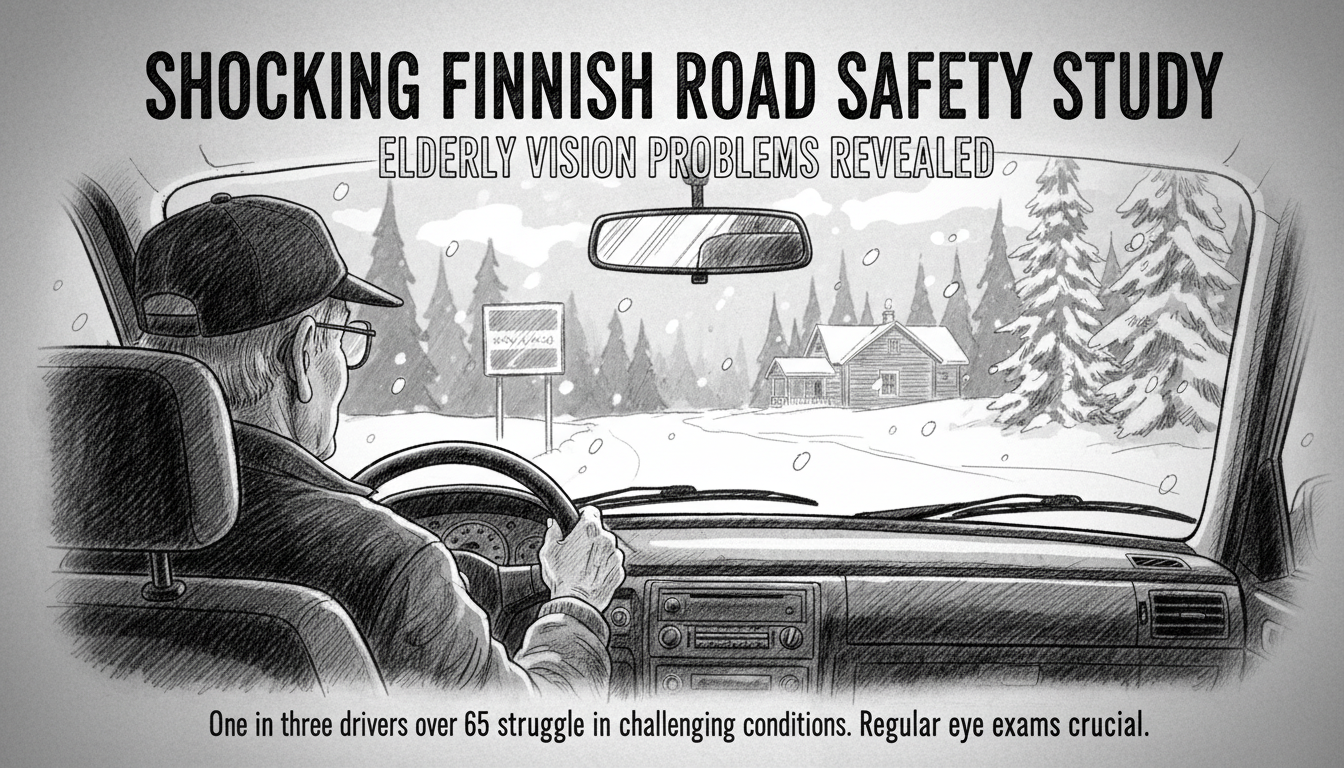A new Finnish study reveals alarming vision problems among elderly drivers that could impact road safety across the country. The research shows that one in three drivers over 60 struggles to see properly in twilight or bad weather conditions.
These findings come from a comprehensive study conducted in August that surveyed 1,013 Finns aged 60 and older. While most participants reported feeling confident about their vision while driving, the data tells a different story.
Dr. Ulla Näpänkangas, an eye disease specialist and CEO of the research organization, emphasizes the seriousness of these findings. She says vision remains one of the most critical factors for safe driving. Even small changes can affect reaction time, observation speed, and distance judgment.
The study uncovered that every third elderly driver faces challenges when ideal driving conditions disappear. Darkness, rain, fog, and oncoming headlights create problems for a frightening number of motorists.
More concerning still, many drivers fail to recognize how their changing vision affects driving safety. Conditions like cataracts develop gradually, making it difficult for individuals to notice the deterioration themselves.
Dr. Näpänkangas explains this phenomenon clearly. Many people gradually adapt to worsening vision without realizing how it impacts their driving performance, she notes.
The research included a powerful demonstration event in Inkoo, where participants experienced driving with cataract simulation glasses. Even double world rally champion Marcus Grönholm struggled with the impaired vision during simulator tests.
The study's positive baseline finding that most elderly Finns feel confident about their vision masks deeper concerns. Nearly one quarter of respondents over 60 expressed worry about how their eyesight affects their driving ability.
Gender differences emerged in the data. Women reported more concerns about vision affecting their driving than men. Caution while driving became particularly pronounced among those over 75.
The statistics reveal widespread eye health issues among the elderly population. A staggering 82 percent of respondents reported at least one eye-related complaint. Dry eyes and age-related vision changes were most common.
Cataracts presented a particular problem, especially for those over 70. Women reported suffering from cataracts nearly three times more frequently than men.
Dr. Näpänkangas offers both warning and reassurance. Cataracts will affect almost everyone eventually, but they're easily treated with surgery, she explains. We want people to understand how much cataracts affect driving vision. They cloud the eye's lens and make driving risky even for professional drivers.
This research highlights a critical gap between perception and reality in elderly driving safety. Finland's aging population means these findings have implications for traffic safety planning and vision testing requirements.
Regular eye examinations become increasingly important as drivers age. The study suggests many elderly drivers may need more frequent vision checks than currently required by Finnish driving regulations.
The research methodology involved random sampling from different regions and community types across Finland. This approach ensures the findings represent the broader elderly driving population rather than just those with known vision problems.
As Finland's population continues aging, these vision-related driving challenges will likely become more prevalent. The study serves as an important reminder for all drivers to monitor their vision regularly and adjust their driving habits as needed.

